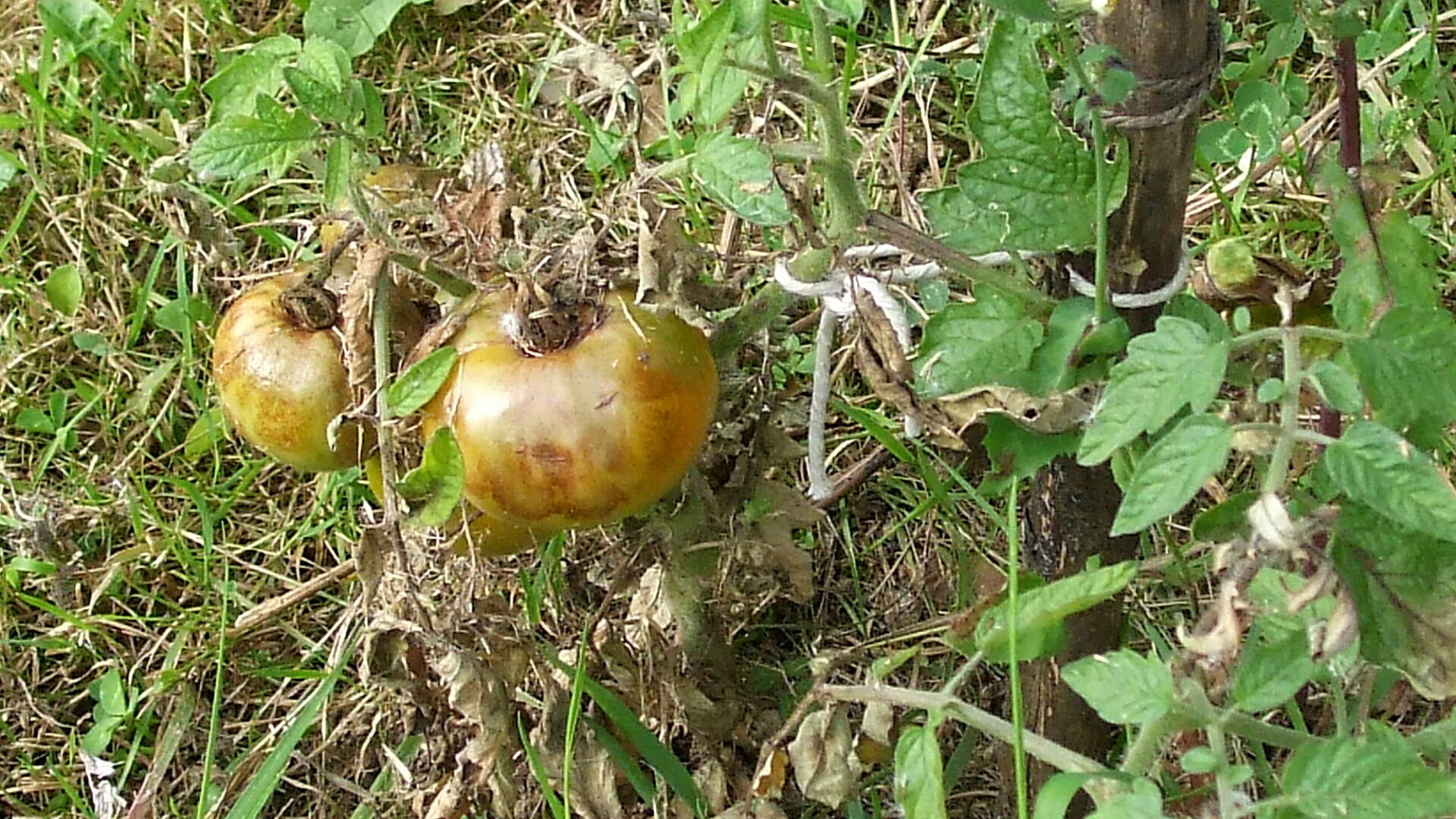Ways to beat the blight!

Blight is a virulent fungus that mainly attacks tomatoes and potatoes – and can destroy plants very quickly. It’s prevelant from June onwards, and tends to get worse later in the growing season. Most commonly, when people talk about ‘blight’, they are referring to late blight which is caused by the fungus Phytopthora infestans. There’s also an early blight that is a totally different fungus, Alternaria spp., and less commonly encountered.
The fungus is recognisable as a dark, penny sized lesion on the margin of the leaf, that rapidly spreads across the plant. It’s not to be confused with various nutrient deficiencies such as magnesium that cause small spots on the leaves. You may also see it on the stems, which turn dark and rot, then when it reaches the fruit, they turn a sickly grey colour.
Decide where to grow
The blight fungus is spread by small spores that travel in the air. When they land on the leaf, they need humid damp conditions to germinate and infect the plant, otherwise they die out quite quickly. So, a key way of reducing the chances of the blight fungus taking hold is to prevent droplets of water getting on the leaves.
Blight is far worse in outdoor tomato crops than in a glasshouse, where leaves are protected from rainfall. If you don’t have the option of using a glasshouse, then growing against a south facing wall will offer some protection from rainfall. The heat from the wall and the exposure from the sun should also dry out any moisture on the leaves more quickly. Be aware that potatoes are also susceptible to the disease and can spread it to tomatoes, so keep an eye on these too and avoid having them in the same crop rotations.
Choice of variety is also key
Different vareties of tomato offer different levels of ‘resilience’ to the disease. Some of the varieties from our Heritage Seed Library, for example, such as ‘Fablonelistnyj’, ‘Imur Prior Beta’ and ‘Small Pear’ have some reported levels of blight tolerance from Seed Guardians that have grown them.
‘Primabella’ is another open-pollinated variety, available from a range of seed catalogues, that has widely claimed blight resistance. There are also a number of F1 varieties such as ‘Crimson Crush’ that show good resistance, but you will not be able to save seeds from these.
Care tips to stop blight
The way we grow our tomatoes also makes a considerable difference to whether or not they get affected by blight. Aim to get plenty of air circulation around the leaves - cordon tomatoes are genreally better for this. And allow plenty of spacing between plants, avoiding a chaotic tangle of leaves. This not only allows blight to spread quickly, but also makes it difficult to notice until it is too late.
If you manage to catch it very early, you can remove infected leaves. And if you have a period of hot dry weather, then the disease won’t progress any further. With damp weather, the disease is likely to progress through the tomato plants, and once more than 10% of the leaves have been infected, you are sadly fighting a losing battle.
At this stage, harvest any fruit that is not infected and dispose of the plants in your council greenwaste bin, where will be composted at high temperature. Keep a very watchful eye on any fruits that you have harvested for signs of the disease.